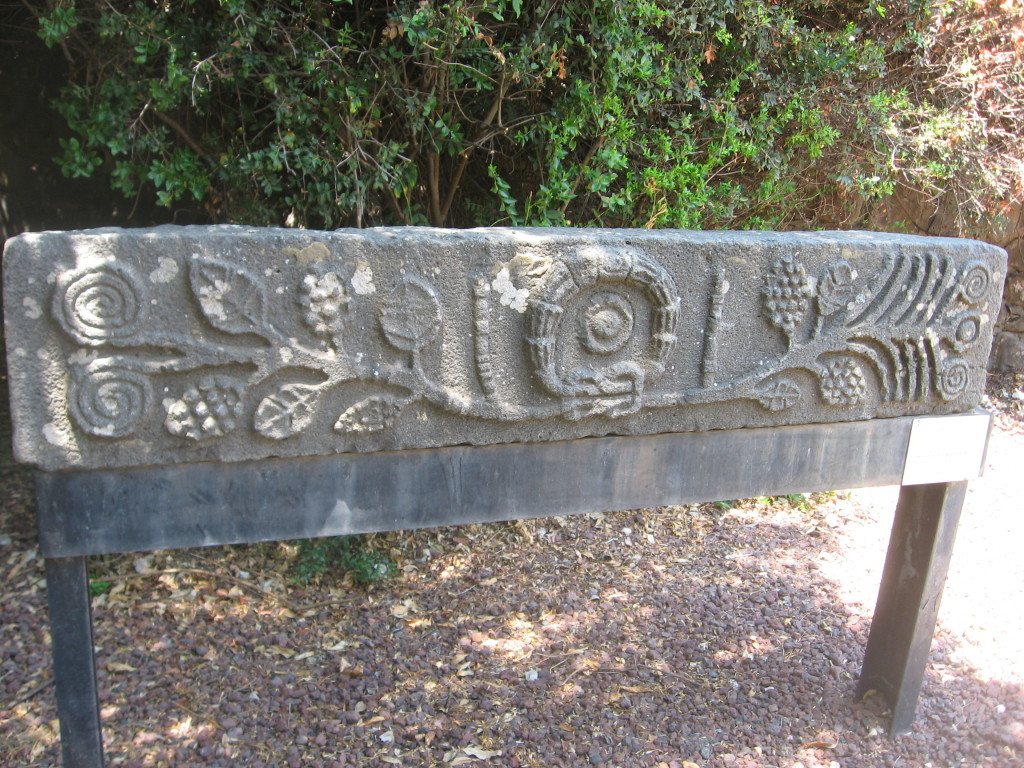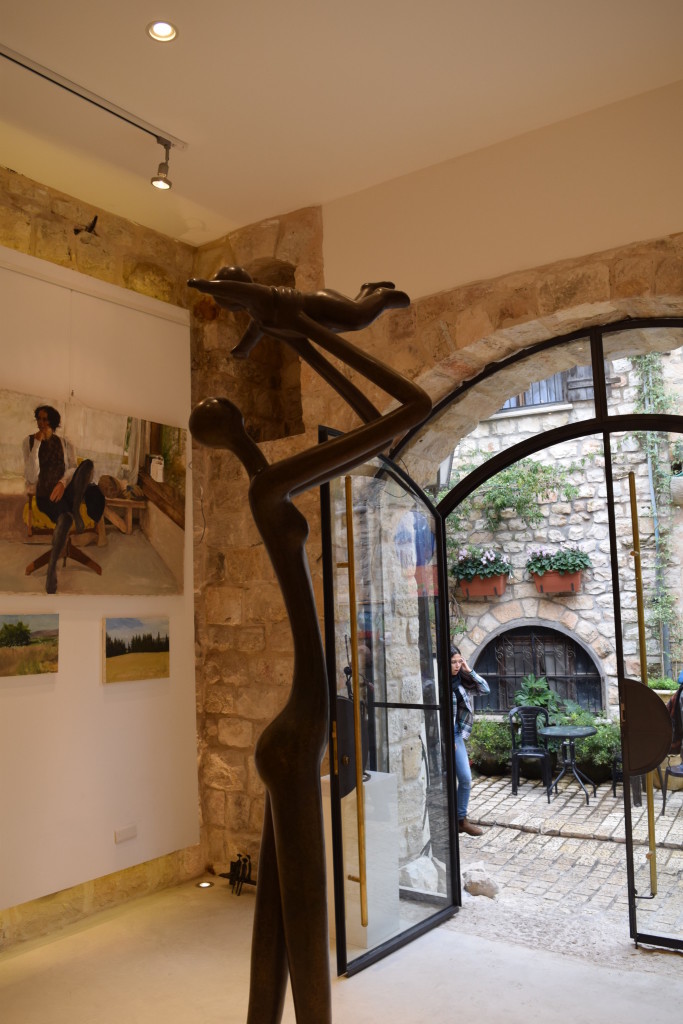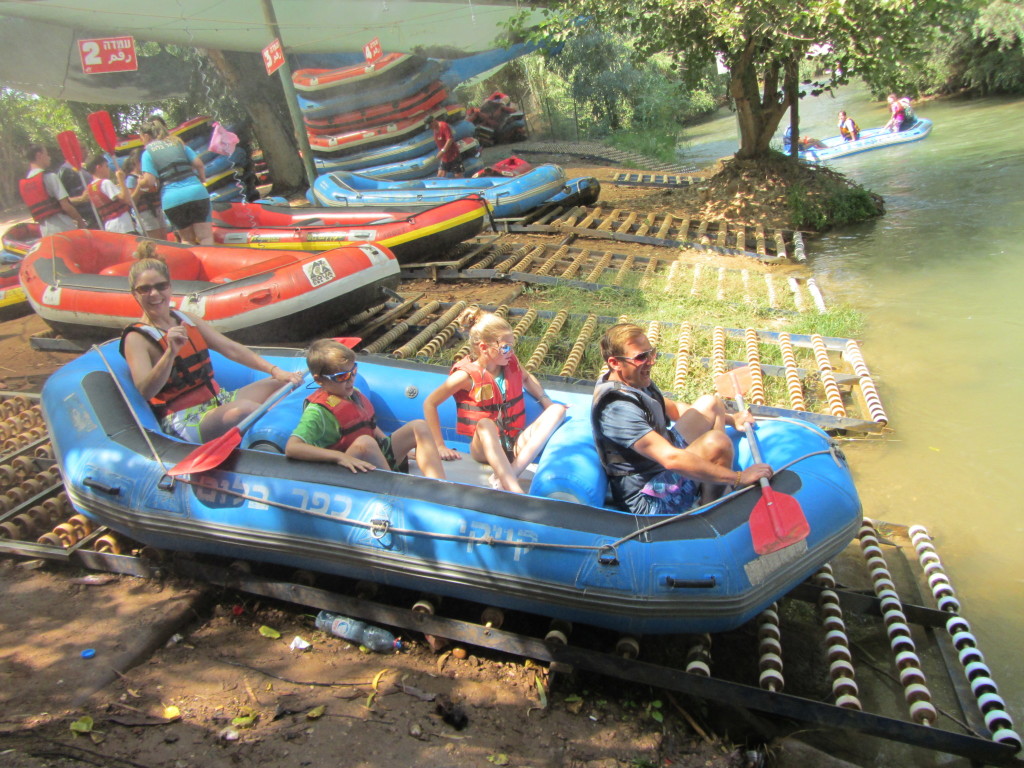The Galilee and Golan are rich in Jewish history and culture. Since 1967 the only non-Jewish population left in the Golan are the Druze villages of the northern Golan, certainly worth a visit too. There is also one functioning church and a handful of Christians. If you only have a day it is possible to cover the entire region. For example if you are departing from a cruise ship from the Port of Haifa in the morning you can travel all the way to the Syrian border in the eastern Golan Heights, and see a couple of other sites during the day, before returning to the port for your ship’s departure. Bear in mind that it’s also possible to include sites from the Coastal Plain when you’re touring in the Galilee and Golan.
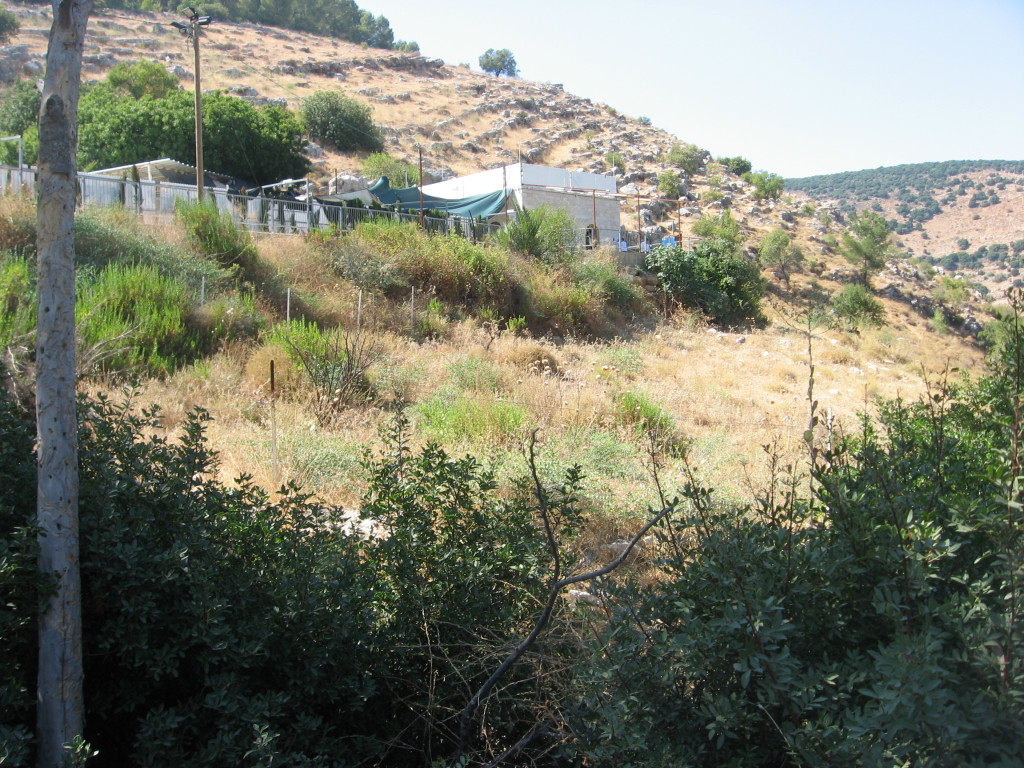
Amuka, hidden away amongst the hills of Upper Galilee is off-the-beaten track, a pilgrimage site for those seeking a spouse.
Below we group sites which are close together by sub-region (Golan, Upper Galilee, Lower Galilee).
For a more comprehensive listing of sites in the north which may interest you go to the Home page and click three times as follows: “Site Descriptions”—>”Jewish/Zionist Sites”—>”In the North: Galilee and Golan”. Also check out “Site Descriptions —-> “Coastal Plain and Lowlands”.
What follows are some of the more popular sites. Consult the “Sites” section for other possibilities.
Golan Sites
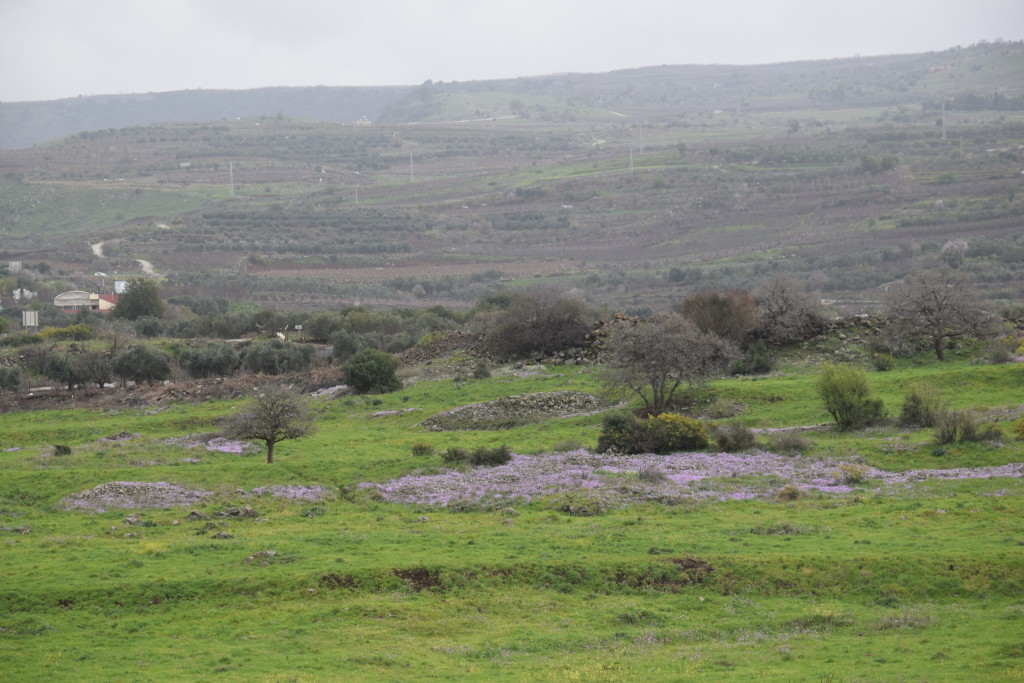
Early spring flowers carpet a meadow in the northern Golan near historic Baniyas, a source of the Jordan River.
Mount Bental, a mile from the Syrian border, the place to look into Syria and appreciate the Golan’s strategic importance for Israel in a volatile region.
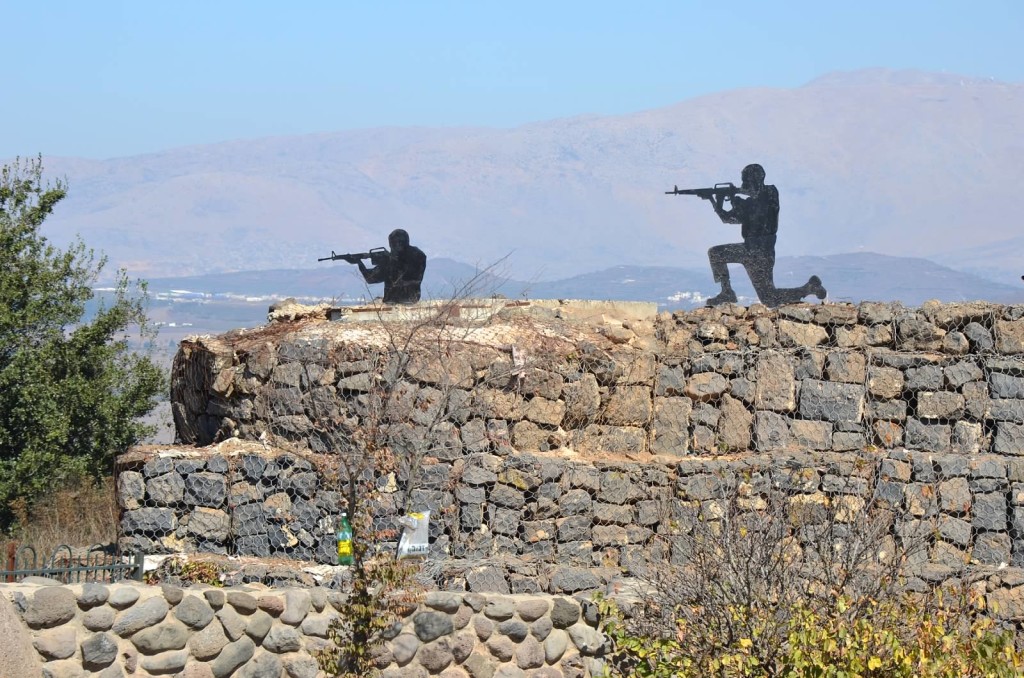
Mount Bental, a former Israeli fortress along the Syrian border defended the nation in the late 1960’s and 1970’s. It is a must-see site viscerally communicating the importance of high ground in military conflict. Today the daily fighting in Syria can be viewed from here. Mount Hermon in the background.
Gamla National Park, site of a Jewish town from the time of the Second Temple and one of the earliest battles between Romans and Jews during the Great Revolt (66-70 CE) which culminated in the destruction of Jerusalem’s Temple in 70 CE. The site also appeals to bird-watchers who can scan the cliffs across the way for Eagles and other birds. Hikers can hike down to the archeological site of Gamla, or down to the Gamla waterfalls.
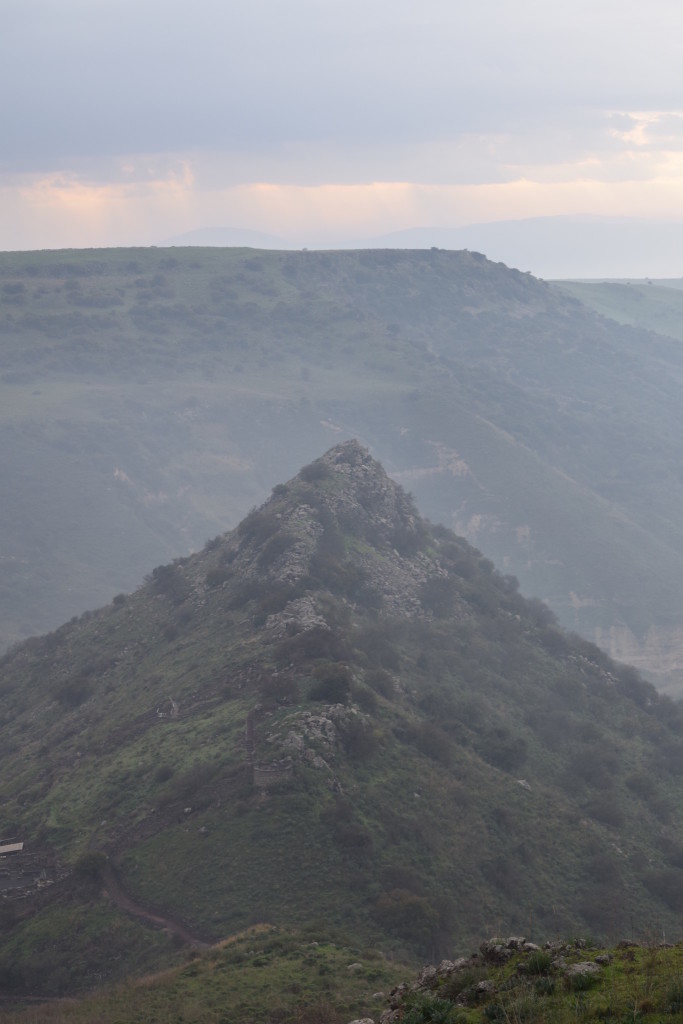
Gamla, whose Jews fell in the defense of Jerusalem at the beginning of the Great Jewish Revolt against the Romans in the year 67.
Baniyas National Park, in the far north of the Golan, a site with religious and cultural significance but also filled with beauty. Baniyas imparts a sense of serenity with its flowing waters and waterfalls, ancient bridges and mills, set amidst tall trees, cliff faces, and towering Mt. Hermon. Here ancient cultures worshiped deities and here Jesus brought the disciples to inquire of them who he was (aka Caesarea Philippi, Matthew 16:13). If you are in Israel’s northeastern corner don’t miss Baniyas.
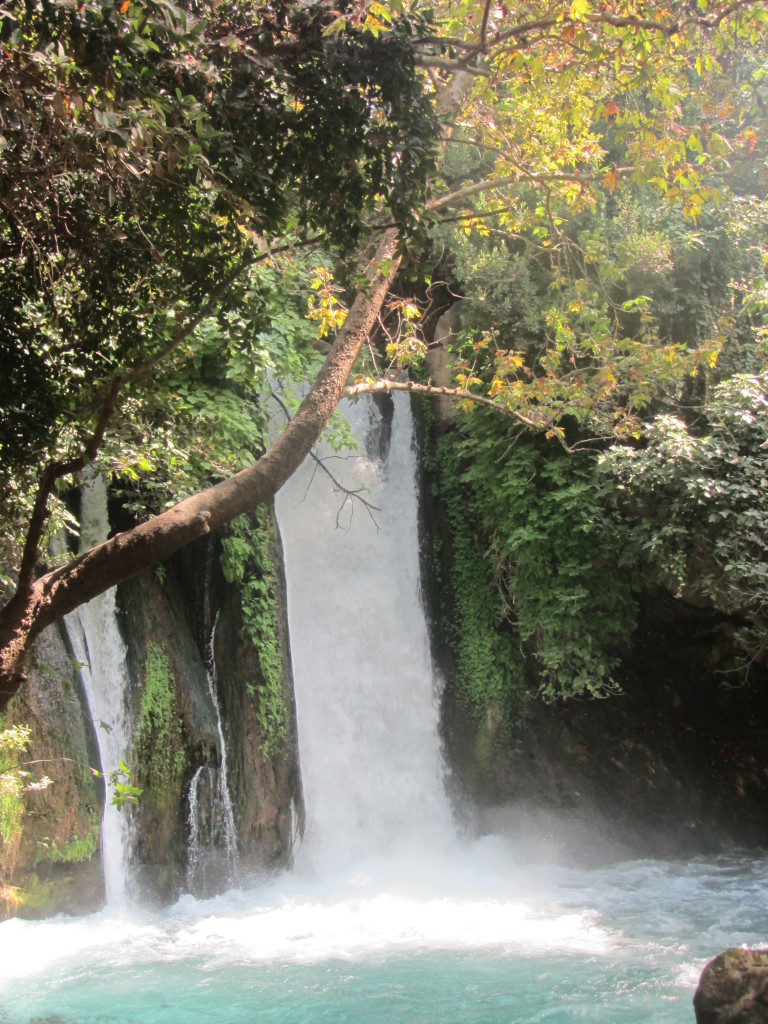
A 20 minute hike from the parking lot takes you along the hanging trail, Israel’s most beautiful water walk, to the Baniyas waterfalls. A steep ten minute ascent takes you back to civilization.
Katzrin Talmudic Park is one of more than 30 examples of Jewish towns in the Golan Height from the early centuries of the common era with a synagogue, proof of vibrant Jewish life in this region of the Land of Israel. Beyond the synagogue, made of the locally quarried Basalt stone, an entire village is laid out to inspect and we can glean a better understanding of local daily life in a small Golan town from the Talmudic, or Byzantine era.
Golan Heights Winery in Katzrin Who knew Israelis made such good wine? Increasingly, everybody who pays attention. And the Golan Heights Winery, headquartered in Katzrin’s industrial section is one of the best, having won the Gran Vinitaly Special Award as the best wine producer at the 19th International Vinitaly Wine Competition in Italy in 2011. No one regrets sampling the offerings here.
Golan Height Jeep/ATV/Tomcar Tours There isn’t a better way to independently get a feeling for the landscape of the Golan while having so much fun as getting behind the wheel of a Tomcar or ATV, or getting out on a trail with a local guide in a Jeep. Always a highlight.
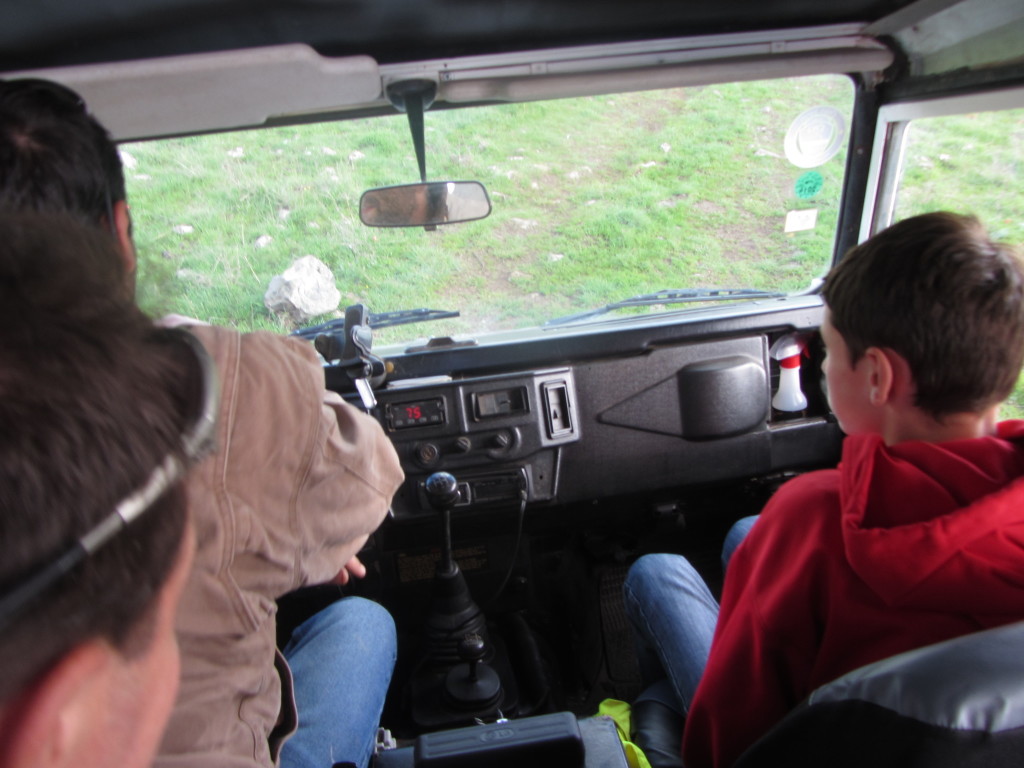
Count on four wheel drive jeeps to get you to the most interesting sites in the Middle East–tracking rare wild life or viewing ISIS squaring off against Hizbullah just across the Syrian border. The local guides know their stuff and bring it home.
Upper Galilee
Safed Art and Kaballah Visits to Safed always take longer than expected. Between the Artist Colony, the historical synagogues, mountain air and the views, people like to linger here. Everyone finds there own niche here, their favorite aspect of Safed.
Tel Dan Archeology and Water Hike. This place has it all. History from biblical times and archeology to prove it, nature in the form of Israel’s biggest water supply and towering trees, views towards Lebanon and modern history of the Middle East, all encapsulated in this tiny national park in Israel’s far north. Between this place and Baniyas you’re covered.
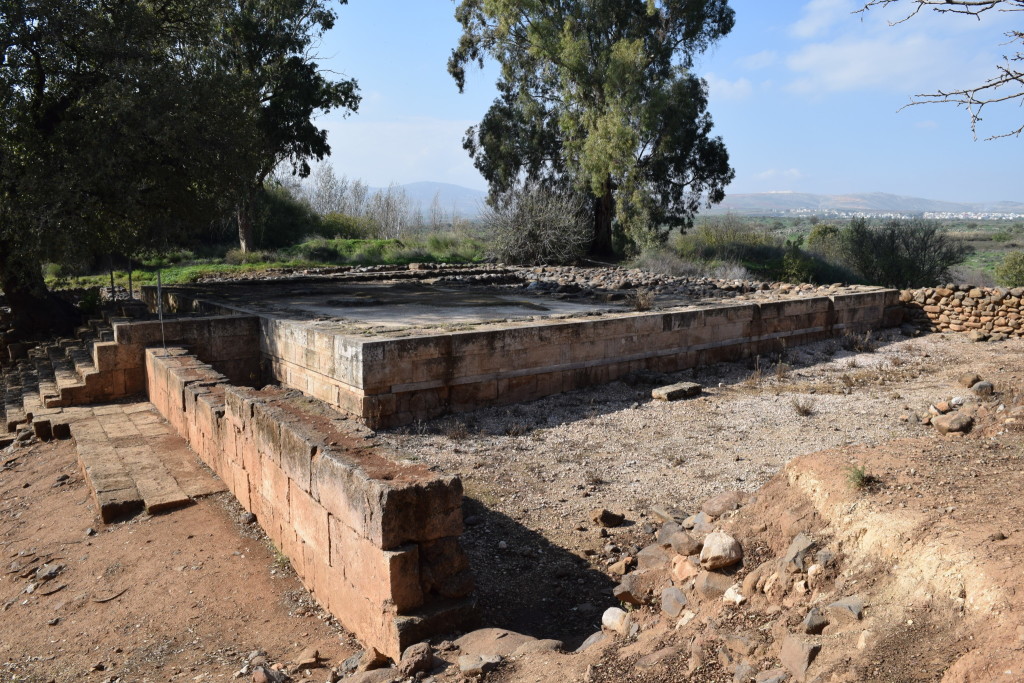
The original cultic site at Tel Dan was built as an alternative sacrificial site to the great temple in Jerusalem. Dan is mentioned in the bible as the northern border of the Land of Israel.
Agamon Hula Nature Reserve The reserve, found in the Hula Valley is an excellent bird-watching site. Here we can watch birds migrate, court and nest. There are a variety of ways to circumnavigate the Agamon Lake including mountain bike, bicycle and club cart. Check their website for other programs, www.agamon-hula.co.il/node/21
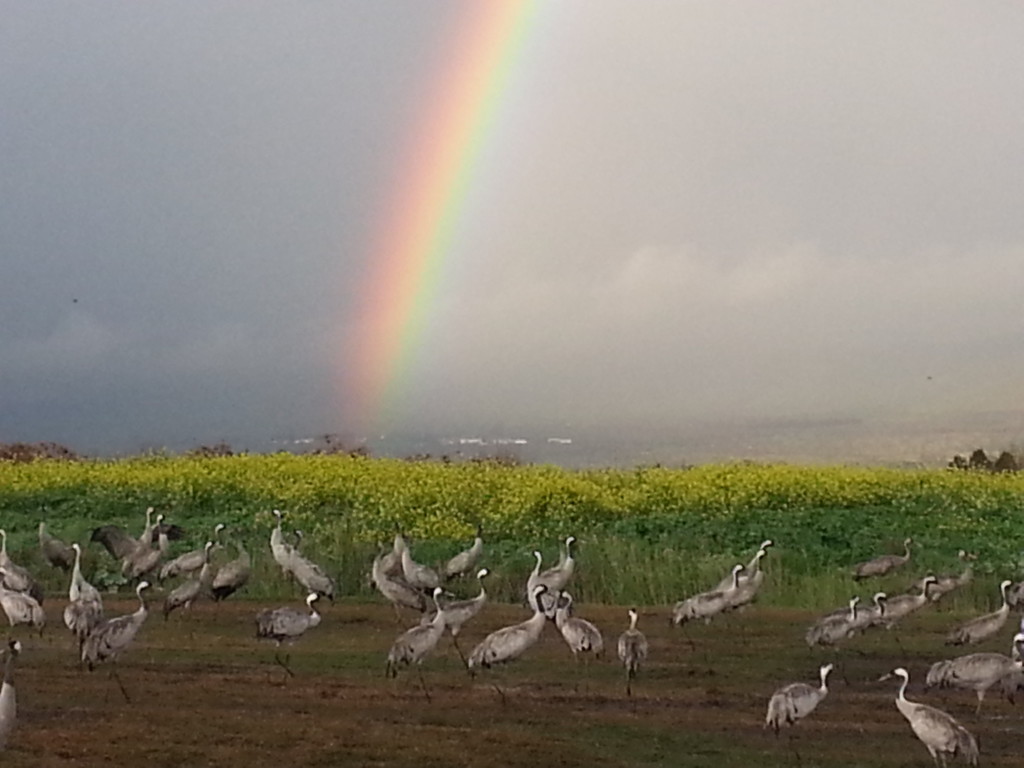
The Hula Valley plays host to 500,000,000 birds annually on their journeys between Africa and Europe.
Jordan River Rafting This is a good traditional outing for multi-generational families. Depending on the rains from the previous Winter the Jordan River may be a slow, lazy and shallow stream, or a more lively, brisk and robust waterway. Either way you’ll get wet, get some sun (cover up with hats and sunscreen) and appreciate Israel’s precious water resources with a new perspective.
Lower Galilee
Situated in the heart of the Lower Galilee, equidistant between the Mediterranean Sea and the Sea of Galilee (23 kilometers each way) Tzippori is one of the most comprehensive archaeological sites in Israel with relics from both Roman/Pagan and Jewish cultures. It’s centrality in the Galilee means one can visit it in the same day as several other sites in the Galilee while traveling along an east-west axis.
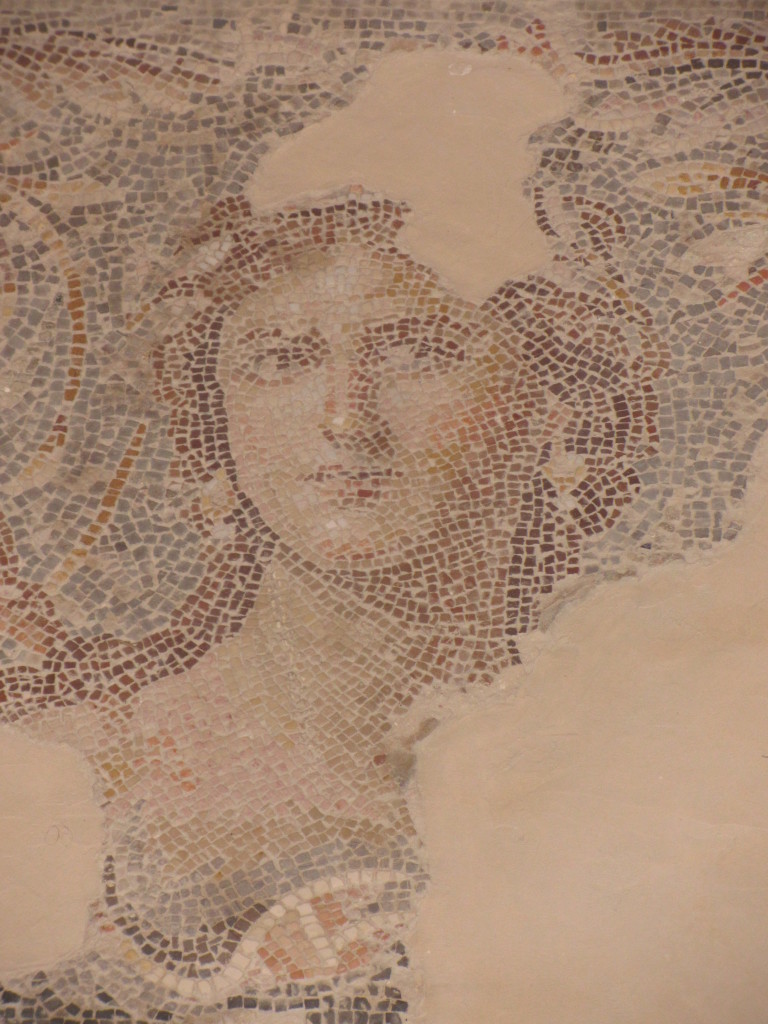
The Mona Lisa of the Galilee mosaic at Tzippori decorates the floor of an upscale Talmudic era mansion on the town’s summit.
Just a ten minute drive from Tzippori, and easily visible to the north from Tzippori’s hilltop is the Kfar Kedem Ancient Village, located in the settlement of Hoshaya. This is a hands-on experience teaching the whole family what it would be like to grow and produce the raw materials which fed and clothed people in biblical times, including wool, olives, pita bread and grapes.
Heading west and less than a 25 minute drive from Tzippori you arrive at the national park of Bet Shearim. Bet Shearim was the first Galilean location of the Jewish Sanhedrin (religious court) in the post-temple period of the second century and it eventually moved east across the Galilee finding homes in both Tzippori and Tiberias. But Bet Shearim’s true fame comes from its cavernous tombs where wealthy Jews and notables were buried in the chalky caves over a period of hundreds of years. The most famous burial tomb belongs to Rabbi Judah the Prince, head of the Jewish community in part of the second century and the editor of the Mishnah.
25 minutes east of Tzippori and only a quarter of an hour from Kfar Kedem one can participate in a deeply meaningful acitivity in a new forest close to Kibbutz Lavi, Tree Planting in the Galilee (with JNF). Out in the fields of the Galilee one quickly appreciates the physical effort required to bring life to the rocky soil while digging, placing and covering the new saplings in the warm earth. As the years pass one can return to the forest and observe the growing forest and the trees the family planted years ago.

